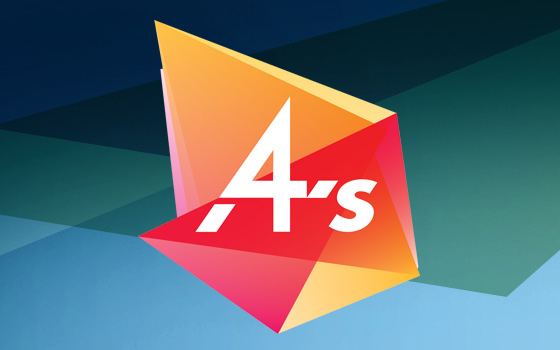Webinars have the unique ability to engage prospects in real time and in an immersive environment. These characteristics make webinars a valuable addition to your content marketing strategy. And in general, we recommend striving for a diversity of formats in your content strategy, largely based on the strengths of your team and their communication styles and the preferences of your audience.
And really, do you actually know how your target audience prefers to digest information? Some of your audience may wish to read your thought leadership in the form of blog articles or white papers. Others may love the ease of subscribing to your podcast and receiving regular new episodes straight to their mobile device. When developing your content strategy, part of the key to success is having variety, measuring each formats’ success, and regularly updating your content plan.
While webinars are a more advanced content type, requiring a bit more planning and orchestration than blog articles, say, they are worth the effort. In this article, we’ll walk you through why that’s the case and how your firm should produce a webinar as part of its content marketing strategy.
Why should I do a webinar?
Before we dive into how to hold a webinar, let’s take a moment to revisit the reasons for producing one in the first place:
- Webinars generate more leads. As opposed to videos and podcasts, we recommend gating your webinars behind a registration form. Like any gated asset, webinars drive conversions as visitors complete your registration form in order to access this high-valuable content. Between having longer promotional cycles and attracting your prospects to a specific event, webinars will help build your lists.
- Webinars provide true human interaction. They give you the opportunity to talk about an area of expertise rather than write about it. This is a completely different type of education than your blog articles or other written content. Even if your articles have supporting images and videos, it’s still not quite the same; webinars are unique in providing the viewer with someone who is speaking directly to them (or at least to their challenges and pain points). This is about as close as you can get to an in-person event.
- Webinar technology is straightforward. To host a webinar, you simply need your computer, a decent microphone, and a stable Internet connection. At least, that’s the bare minimum. From there, we tend to recommend GoToWebinar or WebEx to our clients, as these tools integrate with most major marketing automation systems. Beyond these few requirements, hosting a webinar is really as simple as presenting on a topic with PowerPoint or Keynote and including a Q&A session at the end.
- Webinars provide different data than other content types. Even in comparison to other gated assets on your site, webinars tell you more about your audience than simply who they are. After your webinar, you’ll be able to see how long your attendees stayed with the webinar presentation as their live screen (so you can see if you kept everyone engaged the whole time or pinpoint exactly where they started to drop off). You’ll also be able to assess how many questions were submitted, along with a slew of other data points. Unlike other content types, webinar data allows you to see KPIs to almost instantaneously inform decisions for your next webinar.
How do I hold a webinar?
First things first, there are a few technical considerations specific to webinars that shouldn’t be overlooked and need to be part of your planning process.
The Technical Details of Producing a Webinar
- Always try to host your own webinar as opposed to being a guest on someone else’s webinar or contracting a third party to run the webinar for you. Webinars, like any other content type, give you an opportunity to increase conversions and track attendee behaviors on your website. If the webinar is hosted elsewhere, you’ll lose that data. Choose GoToWebinar or WebEx (or one of the many other options on the market). Then, if you’re using a marketing automation tool like HubSpot or Act-On, make sure your webinar software integrates properly with your marketing automation system.
- The webinar-hosting software will record the audio and video of the presentation, but we always recommend having a backup recording — just in case. Use a tool like Camtasia to create a second recording of the live presentation.
- A “dry run” prior to the live event is always a good idea, even if it’s just an hour before the webinar. Login to the webinar software, pull up your slide deck or get your thought leaders in front of the camera, test your video and audio, and shake out all of your pre-presentation jitters.
- Make sure you have at least one person from your firm attending the webinar who is not responsible for its presentation. This individual will be able to let you know of any serious technical issues (screen freezing, audio cutting out, etc.) that might occur in real time without being obvious to the presenters. They’ll also be able to provide feedback to you from the attendee’s point of view after the fact.
- Try to plan on having the recording from your live event up on your website within three business days. When the recording is posted, you’ll have an opportunity to promote it back to the list of attendees, as well as to people who registered but did not attend. If you wait too long to publish it to the site, you’ll lose the window of time in which the presentation is still top of mind for people.
- Send the audio recording from your webinar to a transcription service like Rev and post the indexable transcription to your website after you embed the recording of the live event. While you should get the recording and its transcript up to your site as quickly as possible, it’s also worth taking the time to update your webinar’s pre-gate abstract (the indexable copy on your registration page that led to your original sign-up form) after the event is complete to optimize its indexable content. Consider key takeaways from your webinar and update your copy accordingly.
How to Create Your Webinar Presentation
You want your webinar to be engaging. You want the right topic that urges prospects to register in the first place. The right schedule to allow for as many attendees to join as possible. The right format to keep attendees engaged throughout. And, ultimately, the right display of your expertise to drive your firm deeper into viewers’ consideration sets.
So now is the time to either reflect on a webinar you enjoyed recently or watch a few if it’s been awhile since you engaged with this particular content type. If there’s another company or specific person in your industry you admire, take the time to see if they’re doing webinars and, if so, watch and take notes. The reality is that everyone holds webinars differently, and you need to find your own way to do it. But ideas from others you respect may spark your creativity and help you format your webinar event.
We want you to do webinars. We can’t guarantee that they’ll be the only form of lead generation your firm needs, but we guarantee that after effectively promoting and holding a few throughout the year you’ll be able to gauge their performance and decide how to prioritize webinars in your upcoming content marketing plans.
But you’ll never really know webinars’ full potential to impact your sales funnel if you only produce flops. Avoid doing so by thinking through the following details before you jump on-screen.
Tips for Engaging Webinar Presentations
- Plan your webinar to last 30-45 minutes. We advise you not to present much longer than that so as to keep your audience engaged and not ask for too much of a time commitment. It’s also in your best interest to plan for a 5-10 minute Q&A session at the end of your webinar.
- Create 3-5 “seed questions” for the Q&A session. Your attendees won’t be able to see how many other attendees there are or if anyone’s sent in any questions. So, if you don’t receive any questions (or any questions you want to answer) from attendees, just use your seed questions.
- Try to keep your presentation slides moving quickly. If you’ve decided to create a traditional deck for your webinar, aim for no more than 30-45 seconds spent on each slide. Remember, your attendees are virtual. You’re competing with email, Slack, Facebook, and any number of other online distractions. If you stay on a single slide for too long, you’ll almost certainly lose people’s attention or run the risk that they’ll believe the screen should have advanced but something’s broken.
- Keep your slide deck visually simple. Too many visual distractions can make it difficult for attendees to focus on what you’re saying. You don’t need to have everything you plan to say on the screen in front of your audience. Keep some of your expertise and strongest arguments for verbal delivery. Webinars are unique in that they allow you to communicate visually and verbally at the same time so you’ll want to think carefully about which points to delivery visually and which to deliver verbally.
You may decide not to take the classic route of giving a solo presentation and instead ask other team members or even outside guests to collaborate. Watching other webinars will help you make this decision, as will selecting your webinar topic (some topics lend themselves easily to an interview-style setup or require additional outside expertise, while others are easier for one person to take the lead).
Even if you do abandon the typical presentation deck, many of the above best practices still apply. Your audience is visually engaged; you will need something on screen. So stick with something simple and show supporting images and video as much as possible to keep your audience engaged.
This should give you plenty to chew on as you consider planning your first webinar. And in case you’re looking for more advice on webinars, perhaps in a more immersive environment, you can watch our webinar on … webinars!


